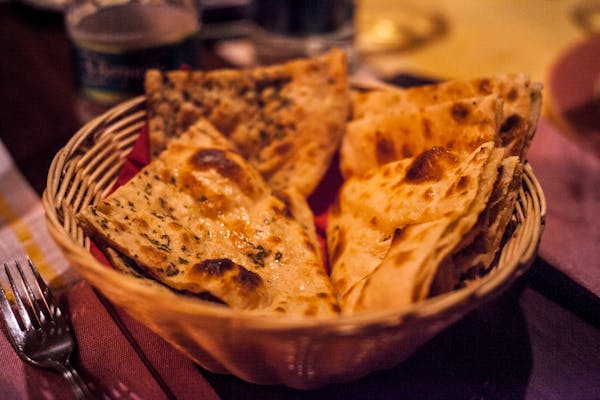Lucknow, the cultural capital of Uttar Pradesh, India, is renowned for its rich heritage and exquisite cuisine. As the former capital of the Nawabs, Lucknow’s culinary scene has been deeply influenced by Persian and Central Asian traditions. One of the most celebrated aspects of Lucknowi cuisine is its Mughlai dishes, which are characterized by their use of rich spices, succulent meats, and intricate cooking techniques. In this article, we will delve into the world of Lucknow’s Nawabi cuisine, exploring some of its most iconic Mughlai dishes and the stories behind them.
Mughlai Cuisine: A Culinary Heritage
Mughlai cuisine originated during the Mughal Empire, which
ruled India from the 16th to the 18th century. The
Mughals brought their culinary traditions from Central Asia and Persia, which
were further influenced by local Indian flavors. This fusion of cultures
resulted in the creation of a unique and sophisticated cuisine that continues
to be celebrated today.
Lucknow, as the capital of the Nawabs, played a
significant role in the development of Mughlai cuisine. The Nawabs were known
for their love of fine food and their patronage of talented chefs. This led to
the creation of a culinary culture that emphasized the use of high-quality
ingredients, intricate cooking techniques, and elaborate presentations.
Iconic Mughlai Dishes from Lucknow
·
Biryani: Biryani is perhaps the most famous
Mughlai dish, and it is available in various forms throughout India. However,
the Lucknowi biryani is considered to be the most authentic and flavorful. It
is typically made with rice, meat (usually mutton or chicken), and a fragrant
blend of spices. The rice is cooked in a layered manner with the meat and
spices, resulting in a dish that is both flavorful and visually appealing.
·
Tandoori Chicken: While tandoori chicken is
often associated with Punjabi cuisine, it has its roots in Mughlai cooking.
This dish involves marinating chicken in a yogurt-based marinade and then
cooking it in a tandoor, a clay oven. The tandoor imparts a smoky flavor to the
chicken, while the marinade adds tenderness and a subtle tang.
·
Galouti Kebab: The galouti kebab is a delicate
and flavorful kebab made from minced meat (usually mutton). It is characterized
by its soft texture and its use of subtle spices. The kebab is typically served
with a side of paratha or naan.
·
Shahi Paneer: For vegetarians, shahi paneer is a
must-try. This dish features paneer (Indian cottage cheese) cooked in a rich
and creamy tomato-based gravy. It is often garnished with nuts and dried
fruits.
·
Seekh Kebab: Seekh kebabs are grilled skewers of
minced meat (usually mutton or lamb) that are seasoned with spices and herbs.
They are typically served with a side of onion and mint chutney.
Lucknow’s Nawabi cuisine is a testament to the rich culinary heritage of India. The Mughlai dishes that originated in Lucknow are characterized by their use of high-quality ingredients, intricate cooking techniques, and a blend of flavors from different cultures. Whether you are a meat lover or a vegetarian, there is something to satisfy every palate in Lucknow’s Nawabi cuisine. So, the next time you find yourself in Lucknow, be sure to indulge in the city’s delicious and flavorful Mughlai dishes.
FAQs About Lucknow’s Nawabi Cuisine
1. What is the difference between Mughlai and Awadhi
cuisine?
While both Mughlai and Awadhi cuisines originate from the
same region, there are subtle differences. Mughlai cuisine is broader,
encompassing dishes from various regions influenced by the Mughal Empire.
Awadhi cuisine, specific to the Awadh region (Lucknow), is characterized by its
delicate flavors, subtle spices, and slow cooking techniques.
2. What are the key ingredients and spices used in Nawabi
cuisine?
Nawabi cuisine is known for its use of rich spices,
succulent meats, and high-quality ingredients. Key spices include cardamom,
cloves, cinnamon, black pepper, cumin, turmeric, saffron, and kewra water (a
floral essence).
3. What are some must-try Nawabi dishes?
Some iconic Nawabi dishes include:
Biryani: A fragrant rice dish cooked with meat and
spices.
Tandoori Chicken: Marinated chicken cooked in a clay
oven.
Galouti Kebab: A delicate kebab made from minced
meat.
Shahi Paneer: A creamy paneer dish.
Seekh Kebab: Grilled skewers of minced meat.
4. What is the significance of “dum pukht” cooking in Nawabi
cuisine?
“Dum pukht” is a slow cooking technique where food is
sealed in a pot and cooked over low heat. This method preserves the juices and
flavors of the ingredients, resulting in tender and flavorful dishes.
5. How do Nawabi desserts differ from other Indian desserts?
Nawabi desserts often feature rich ingredients like milk,
nuts, and saffron. They are known for their sweetness and intricate
preparation. Popular desserts include kulfi, barfi, and gajar ka halwa.
6. Are there any vegetarian options in Nawabi cuisine?
Yes, there are many delicious vegetarian options in Nawabi
cuisine. Shahi paneer, vegetable biryani, and paneer tikka masala are just a
few examples.
7. Where can I find the best Nawabi food in Lucknow?
Lucknow is home to numerous restaurants serving authentic
Nawabi cuisine. Some popular choices include Tunday Kababi, Royal Café, and
Moti Mahal.
8. What is the best time to visit Lucknow to experience
Nawabi cuisine?
The best time to visit Lucknow is during the winter months
(November to February) when the weather is pleasant and the city is less
crowded.
9. How does Nawabi cuisine reflect the cultural heritage of
Lucknow?
Nawabi cuisine is a reflection of Lucknow’s rich cultural
heritage, influenced by Persian, Central Asian, and local Indian traditions.
The intricate preparation, use of high-quality ingredients, and emphasis on
flavor showcase the city’s refined lifestyle.
10. Are there any modern interpretations of Nawabi cuisine?
Yes, contemporary chefs are experimenting with Nawabi cuisine, incorporating modern techniques and flavors while preserving the traditional essence. This has led to the creation of innovative and exciting dishes.

